Sunday 17 April 2011
I have been participating in a lot-building and decorating contest at the Plumb Bob Keep forums. I know quite a few of my readers hang out over there, but for those that don’t I wanted to show you my entry so far.
The theme of the contest is building a medieval inn, and it so happens that I will need an inn for at least three upcoming chapters, so it’s useful work. And with all the craziness in my life over the last month (layoff + new job), it has been a nice way to relax.
Also, it has been so much fun to decorate a lot for springtime! Aside from a few prologue chapters, I have been building winter-based lots for years.
The inn I am building is located a few miles outside of Leol. (Modern Carlisle, at the Scottish border.) It is built next to Saint Ninian’s Well, a sacred shrine and place of pilgrimage. Now, if this info gives you a few guesses about the subject(s) of these chapters, they’re probably all right. ![]()
Following is my contest entry, pretty much verbatim. Future rounds will involve decorating the interior of the inn. This round was about decorating the outside.
You may click any picture to embiggen.
Bird’s eye view:
The street—which is to say the old Roman road between Jorvik and Leol—is off the screen beyond the bottom of the picture. There are two paths into the inn’s courtyard from the road, coming in on either side of the monks’ dwelling at bottom center.
Here is a view of the leftmost entrance from the road:
The old Roman mile marker still stands amidst flowering weeds at bottom right. The stable can be seen at the far end of the court, with the pilgrims’ dormitory above. The part of the inn’s upper story nearest the road belongs to the innkeeper’s family.
Here is a close-up of the innkeeper’s lodging:
The pole sticking out of the wall is the inn’s sign. In the Eleventh Century taverns and inns were not identified by hanging signs, but by so-called “ale-stakes” fastened to the wall. If a tavern sold wine as well as ale, a bush was tied to the end of the stake, as our innkeeper has done here. You can read more about ale-stakes here.
Coming around behind the innkeeper’s dwelling, we can see the path from his back door to the outhouse:
In the tavern in the lower level, there is also a door that opens directly onto the path, allowing tavern patrons easy access to the latrine.
Here is a view from the road down the other path into the courtyard:
Again, the stable and dormitory can be seen in the distance.
Advancing down this path, we come to the reason why an inn was built mere miles away from Leol: Saint Ninian’s Well:
Local legend says Saint Ninian stopped here in the Fifth Century, on his return from Rome, and baptized new converts to Christianity in this very well. In the Eleventh Century it is now a popular stopping point for pilgrims on their way to Withorn, Dunholm, or Lothere.
Turning left we can see the front of the inn:
The green double doors are the main entrance. Another ale-stake hangs above. The rooms above the entrance are reserved for the most important guests, who prefer to undertake even pilgrimages in grand comfort.
The smaller green door leads to the kitchen, but for safety, much of the cooking is done outside:
The latrines can be reached through the arch. Above, a roofed walkway connects the smaller dormitory above the kitchen with the loft dormitory above the stables. The loft dormitory can also be reached from an outdoor stairway on the far end, near the well.
Here is a peek from the walkway down onto the latrine and pigsty:
Returning to the courtyard, here is another view of the food preparation area from a vantage point before the stables:
Finally, another view of the front of the inn from the far end of the stables:
There is a modern well in the center of the courtyard, since it would be sacrilege to do laundry or water horses with water from the sacred well. Guests of the inn may wash up in the basin beside the well.






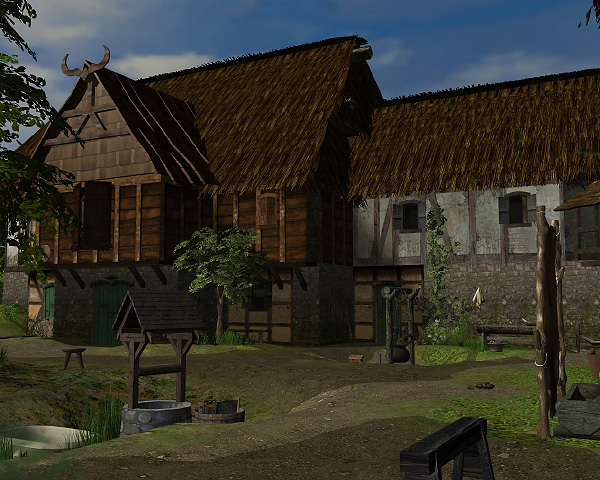
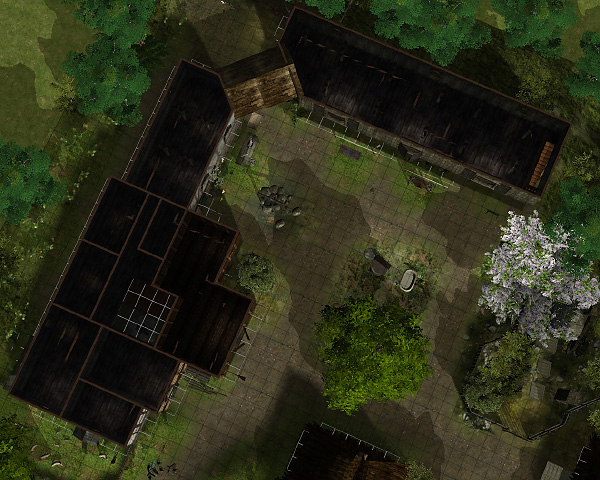
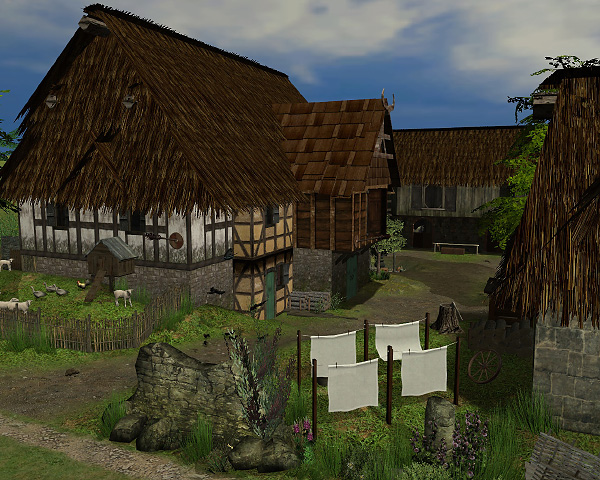
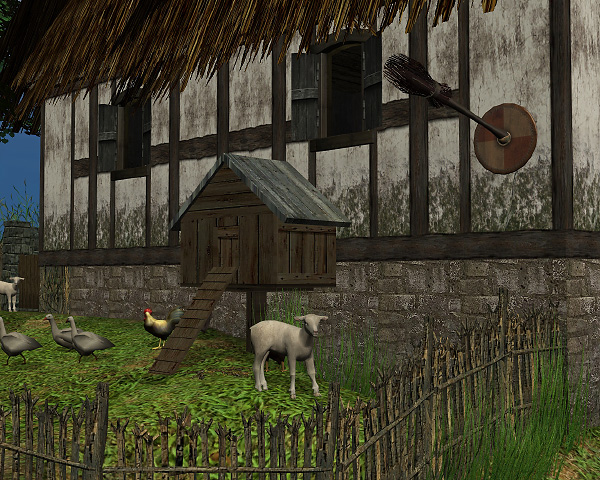
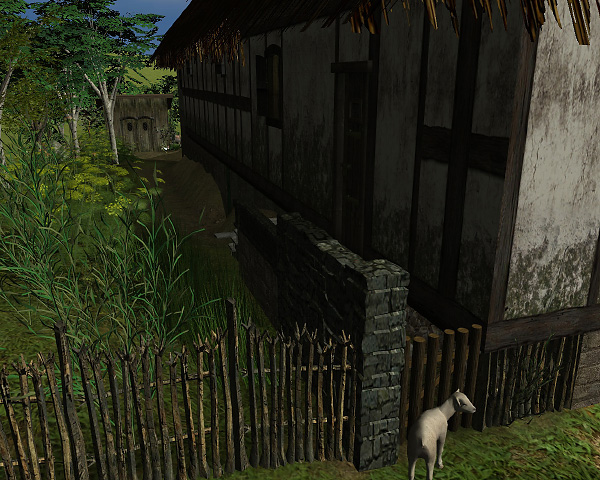
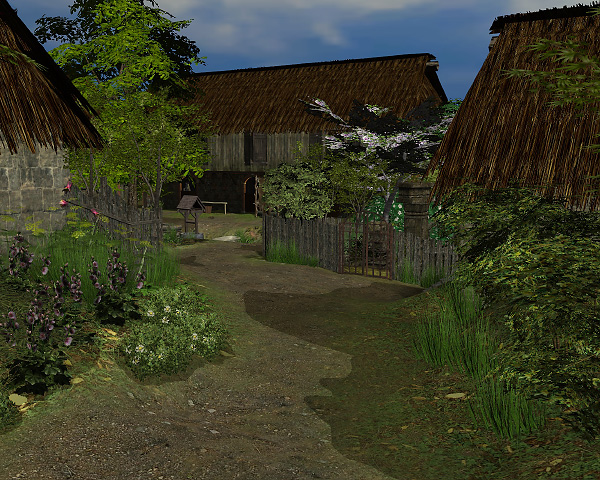
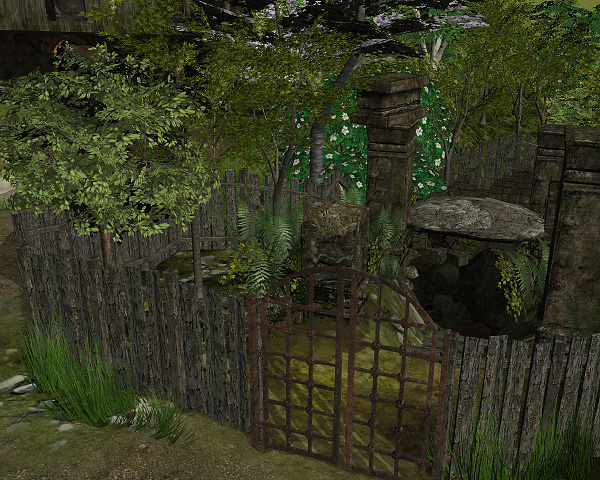
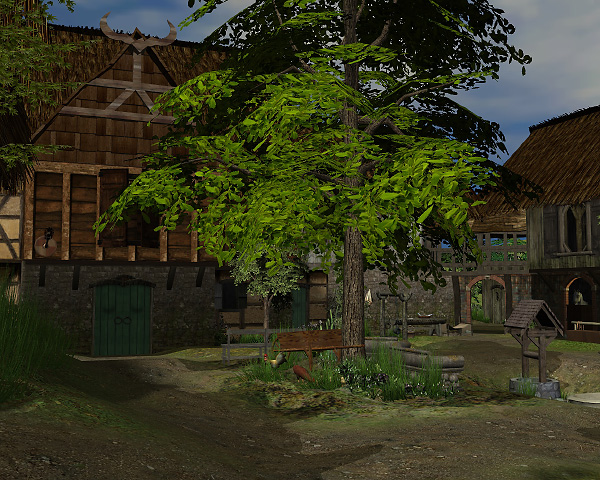
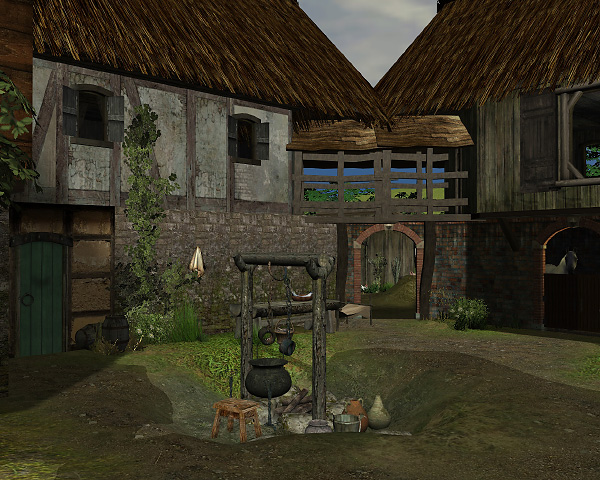
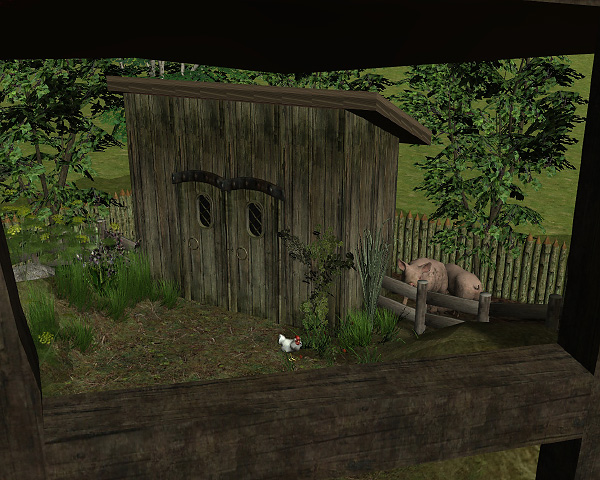
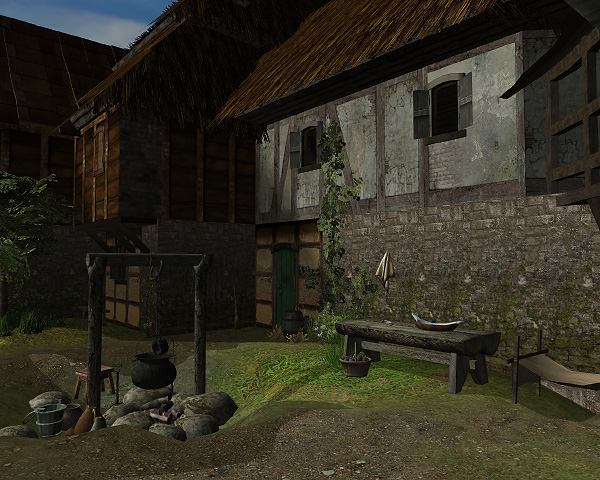



Wow, this entry looks BEAUTIFUL! You’ll definitely give LadyLama a run for her money with this one :O !